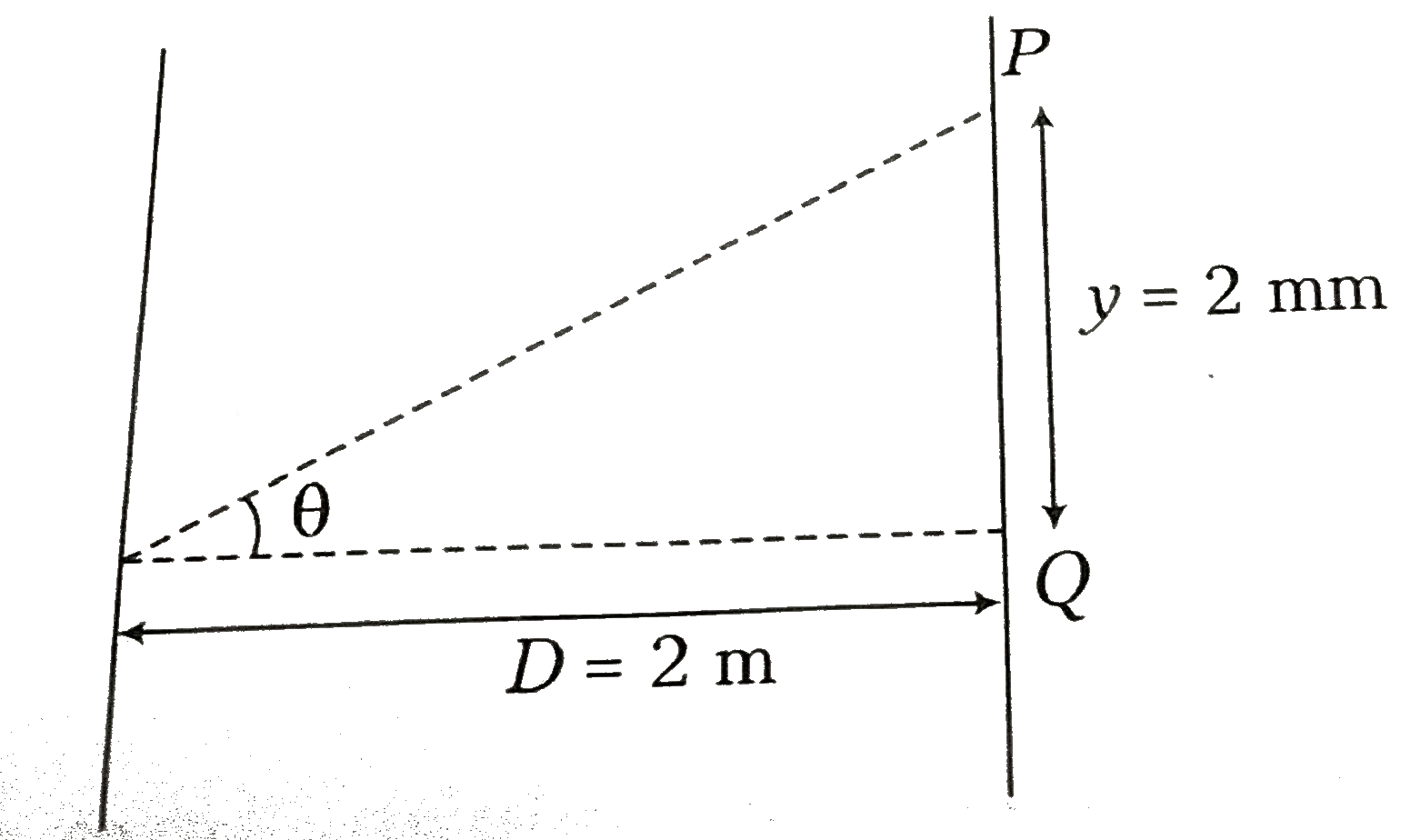A beam of light of wavelength 400 nm falls on a narrow slit and the resulting diffraction pattern is observed on a screen 2 m away from the slit. It is observed that 2nd order minima occurs at a distance of 2 mm from the position of central maxima. Find the width of hte slit.
Given, λ=400nm=400×10−9m
D=2m,y=2mm=2×10−3m

Let point P is the point of second order minima.
Now sinθ=tanθ≈θ=2×10−32=10−3
Let the slit separation be a.
Now, for second order minima θ=2λa=10−3
⇒2×400×10−9a=10−3
Thus, we obtain a=0.8mm
Topper's Solved these Questions
Similar Questions
A parallel beam of light of wavelength 500 nm falls on a narrow slit and the resulting diffraction pattern is observed on a screen 1 m away. It is observed that the first minimum is at a distance of 2.5 mm from the centre of the screen. Find the width of the slit.
View SolutionA parallel beam of light of wavelength 500 nm falls on a narrow slit and the resulting diffraction pattern is observe on screen 1 m away. It is observed that the first minimum is at a distance of 2.5mm from the centre of the screen. Find the width of the slit.
View Solution
Knowledge Check
- Question 1 - Select One
A beam of light of wavelength 600 nm from a distant source falls on a single slit 1 mm wide and the resulting diffraction pattern is observed on a screen 2 m away. The distance between the first dark fringes on either side of the central bright fringe is
A1.2mmB1.2cmC2.4cmD2.4mm - Question 2 - Select One
A beam of light of wavelength 600nm from a distance source falls on a single slit 1.00mm side and the resulting diffraction pattern is observed on a screen 2m away. The distance between the first dark frings on either side of the central bright fringe is
A(a) 1.2cmB(b) 1.2mmC(c) 2.4cmD(d) 2.4mm
A parallel beam of light of 600nm falls on a narrow slit and the resulting diffraction pattern is observed on a screen .12m away. It is observed that the first minimum is at a distance of 3mm from the centre of the screen. Calculate the width of the slit.
View SolutionA parallel beam of light of 450 nm falls on a narrow slit and the resulting diffraction pattern is observed on a screen 1.5 m away. It is observed that the first minimum is at a distance of 3 mm from the centre of the screen. Calculate the width of the slit.
View SolutionA parallel beam of light of wavelength 500 nm falls on a narrow slit and the resulting diffraction pattern is obtained on a screen 1 m away. If the first minimum is formed at a distance of 2.5 mm from the centre of the screen, find the
(i) width of the slit, and
(ii) distance of first secondary maximum from the centre of the screen.View Solution(a) What is a wave front? How does it propagate? Using Huygens' principle, explain reflection of a plane wavefront from a surface and verify the laws of reflection. (b) A parallel beam of light of wavelength 500 nm falls on a narrow slit and the resulting diffraction pattern is obtained on a screen 1 m away. If the first minimum is formed at a distance of 2.5 mm from the centre of screen, find the (i) width of the slit, and (ii) distance of first secondary maximum from the centre of the screen.
View SolutionA beam of light of wavelength 600 nm from a distance source falls on a single slit 2 mm wide and the resulting diffraction pattern is observed on a screen 2m away. What is the distance between the first dark fringes on either side of central bright fringe ?
View SolutionA beam of light of wavelength 600 nm from a distant source
falls on a single slit 1.0 mm wide and the resulting diffraction pattern is
observed on a screen 2m away. What is the distance between the first dark
fringe on either side of the central bright fringe?View Solution

